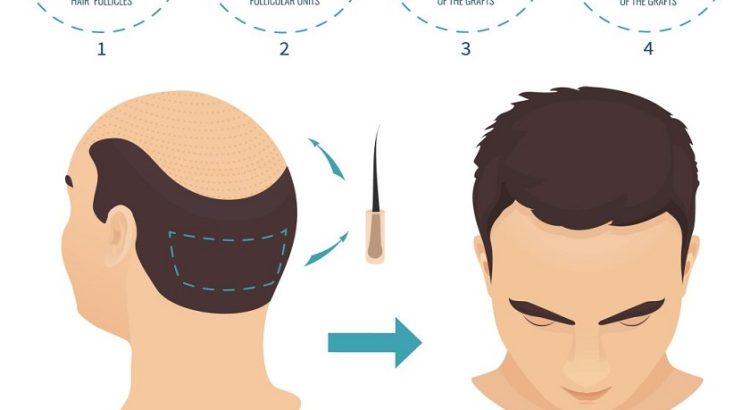Contents;
Understanding Fue Hair Transplant: The Basics
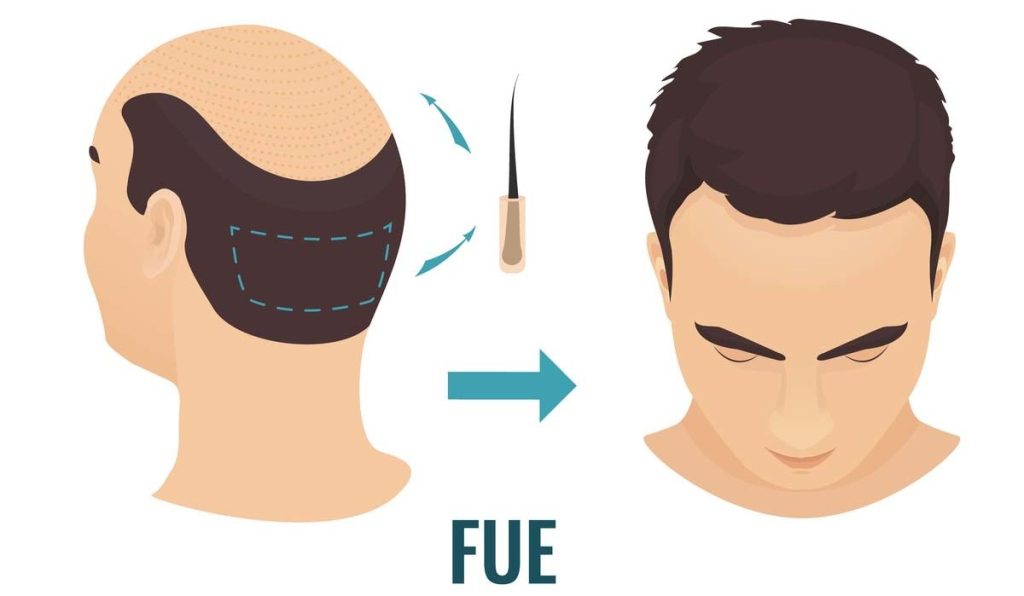
Fue hair transplant, also known as follicular unit extraction, is a surgical procedure that involves the extraction of individual hair follicles from the donor area of the scalp and implantation into the recipient area. This technique is widely used for hair transplantation due to its minimally invasive nature and natural-looking results. The basic principle behind fue hair transplant is the harvesting of healthy hair follicles that are resistant to balding and transferring them to areas of the scalp that have experienced hair loss. Unlike traditional hair transplant methods, fue does not involve the removal of a strip of scalp, making it a more attractive option for many individuals.
During the fue hair transplant procedure, a specialized tool called a punch is used to extract individual hair follicles from the donor area. This donor area is typically located at the back or sides of the scalp, where the hair is more resistant to the effects of genetic balding. The punch tool creates tiny incisions around each hair follicle, which are then carefully extracted using forceps. These extracted follicles are then prepared and implanted into the bald or thinning areas of the scalp, with careful consideration of the natural hairline and direction of hair growth.
One of the main advantages of fue hair transplant is that it leaves minimal scarring. Since individual hair follicles are extracted rather than a strip of scalp, the scars are tiny and almost invisible, allowing for short hairstyles or even shaved heads without any noticeable marks. Additionally, fue hair transplant offers faster recovery times compared to traditional methods. Patients usually experience minimal discomfort and can return to their normal activities within a week or so after the procedure.
How Does Fue Hair Transplant Work?
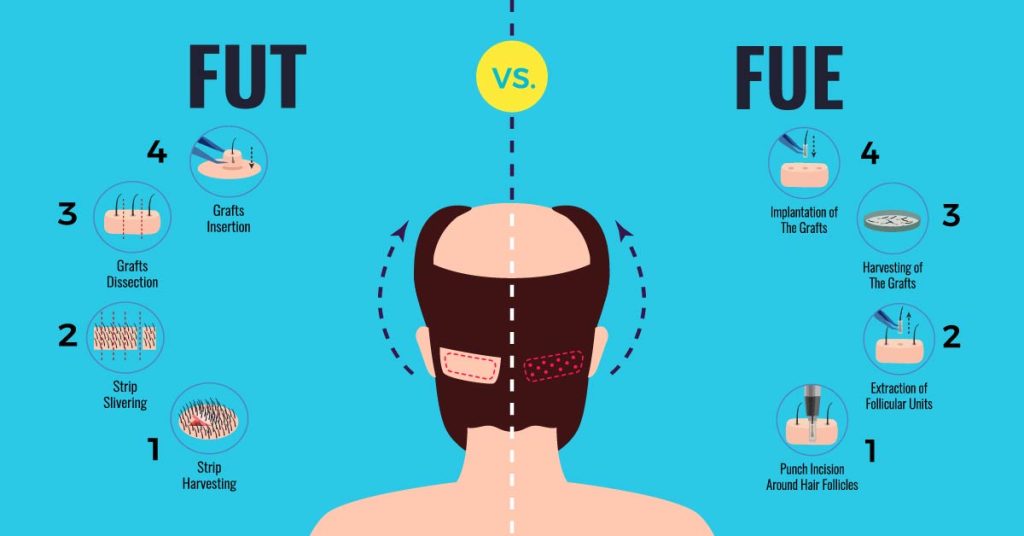
Follicular Unit Extraction (FUE) is a popular method of hair transplantation that involves harvesting individual hair follicles from the donor area and transplanting them into the bald or thinning areas of the scalp. This minimally invasive procedure offers a reliable and efficient solution for those seeking to restore their hairline and achieve natural-looking results.
In FUE hair transplant, the first step involves marking the donor and recipient areas of the scalp. Local anesthesia is then administered to ensure a comfortable experience for the patient throughout the procedure. A specialized device, known as a micro punch or punch graft, is used to extract the hair follicles one by one from the donor area. These follicular units are carefully harvested to maintain their integrity and ensure optimal regrowth.
Once the required number of follicles has been extracted, the surgeon makes tiny incisions in the recipient area to create the necessary recipient sites. The extracted hair follicles are then delicately placed into these recipient sites. The surgeon ensures proper angulation, direction, and density to achieve a natural-looking hairline. The process is repeated until the desired coverage has been achieved.
Advantages Of Fue Hair Transplant
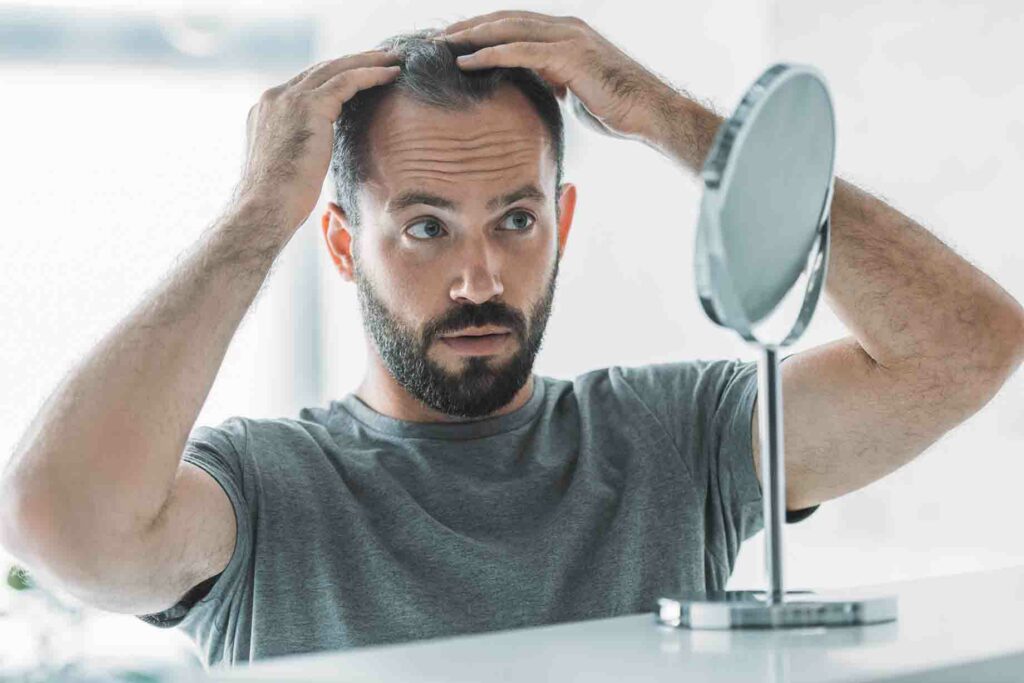
Follicular Unit Extraction (FUE) hair transplant is becoming an increasingly popular method for restoring hair and addressing hair loss. Unlike traditional hair transplant procedures, FUE offers several unique advantages that make it an attractive option for many individuals. Let’s explore the key advantages of FUE hair transplant:
1. Scarless Procedure:
One of the most significant advantages of FUE hair transplant is that it leaves no linear scar. Unlike the strip method, which involves removing a strip of scalp and leaving behind a long scar, FUE utilizes individual extraction of hair follicles. This means that tiny puncture marks are left, which heal quickly and are virtually undetectable. The scarless nature of FUE enables patients to wear their hair short or even shave their heads without worrying about visible scars.
2. Minimally Invasive:
Another advantage of FUE is that it is a minimally invasive procedure. It involves extracting hair follicles individually using a tiny punch tool, typically ranging from 0.6mm to 1mm in size. This precise extraction technique ensures minimal trauma to the surrounding tissues, resulting in quicker healing and minimal discomfort for the patient. It also reduces the risk of complications and allows for a faster recovery compared to traditional hair transplant methods.
3. Natural and Realistic Results:
One of the most sought-after advantages of FUE hair transplant is the natural and realistic results it offers. The individual extraction of follicles allows for precise placement in the desired areas, ensuring a natural hairline and optimal distribution of hair. The transplanted hair blends seamlessly with the existing hair, making it almost impossible to distinguish between the two. This natural-looking outcome boosts the patient’s self-confidence and enhances their overall appearance.
- Limited Downtime:
| Traditional Hair Transplant Methods | FUE Hair Transplant |
|---|---|
| Requires longer downtime due to the invasiveness of the procedure. | Allows for a quicker recovery and a shorter downtime. |
| May involve restrictions on physical activities for an extended period. | Enables patients to resume their normal activities within a few days. |
FUE hair transplant offers the advantage of limited downtime. Compared to traditional hair transplant methods, which may require a longer recovery period, FUE allows patients to get back to their regular routines within a few days. This is because FUE is a minimally invasive procedure, resulting in faster healing and reduced discomfort. Patients can resume their daily activities without significant restrictions, making FUE a convenient option for those with busy lifestyles.
In conclusion, FUE hair transplant provides several advantages over traditional hair transplant methods. Its scarless nature, minimally invasive approach, natural results, and limited downtime make FUE an appealing choice for individuals seeking a permanent solution for hair loss. If you are considering a hair transplant, it is essential to consult with a qualified and experienced hair restoration specialist to determine if FUE is the right option for you.
Preparing For Fue Hair Transplant: What To Expect
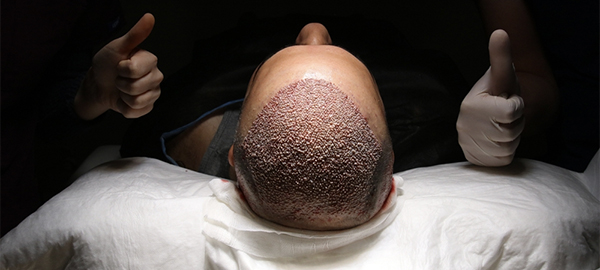
A FUE (Follicular Unit Extraction) hair transplant is a minimally invasive procedure used to treat hair loss. Before undergoing this procedure, it is important to understand what to expect during the preparation phase. Preparing for a FUE hair transplant involves several steps, including a consultation with a hair transplant specialist, understanding the procedure, and following specific guidelines provided by the surgeon.
The first step in preparing for a FUE hair transplant is to schedule a consultation with a hair transplant specialist. During this consultation, the specialist will examine your scalp, assess the condition of your hair, and determine if you are a suitable candidate for the procedure. They will also discuss your expectations, answer any questions you may have, and explain the entire process in detail. It is crucial to have a clear understanding of the procedure to ensure realistic expectations.
Once you have decided to proceed with a FUE hair transplant, your surgeon will provide you with specific guidelines to follow in the days leading up to the procedure. These guidelines may include avoiding certain medications that can interfere with the procedure or increase bleeding. It is important to disclose all medications, including over-the-counter drugs and supplements, to ensure a safe and successful transplant.
Additionally, your surgeon may advise you to refrain from smoking and consuming alcohol for a certain period before the surgery. Smoking and alcohol can impact the healing process and increase the risk of complications. Following these guidelines will help optimize the outcomes and minimize any potential risks associated with the procedure.
Furthermore, your surgeon may provide instructions regarding hair care prior to the transplant. In some cases, you may be asked to refrain from cutting your hair for a certain period before the procedure, as longer hair can provide better coverage and visualization of the donor area. It is essential to carefully follow these instructions to ensure the best possible results.
In summary, preparing for a FUE hair transplant involves scheduling a consultation, understanding the procedure, following specific guidelines provided by the surgeon, and taking necessary precautions leading up to the surgery. By adequately preparing for the transplant, you can optimize the outcomes and ensure a smooth recovery process.
Fue Hair Transplant Procedure: Step-By-Step
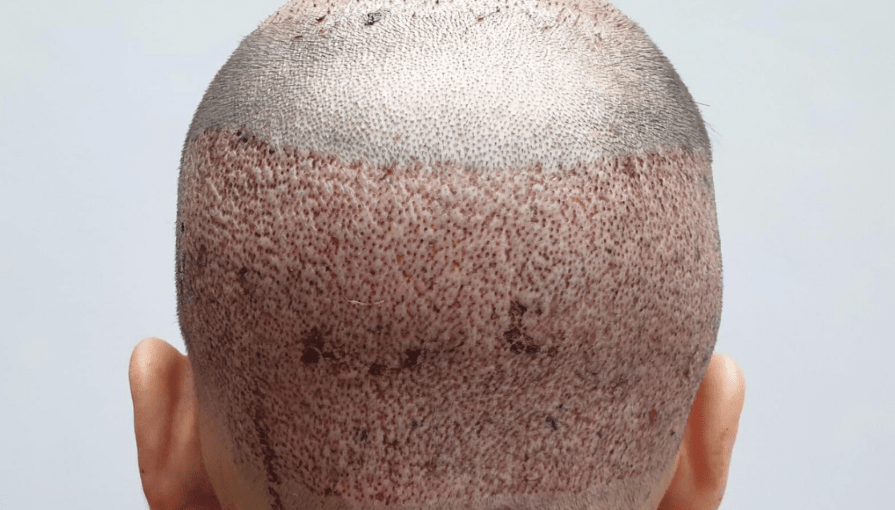
Are you considering a Fue Hair Transplant? It’s important to understand the step-by-step process involved in this procedure to ensure a successful outcome. In this blog post, we will walk you through the entire Fue Hair Transplant procedure, from the initial consultation to the final results.
Step 1: Consultation and Evaluation
The first step in the Fue Hair Transplant procedure is the consultation and evaluation with a qualified hair transplant surgeon. During this initial meeting, you will discuss your hair loss concerns, medical history, and expectations. The surgeon will examine your scalp and determine if you are a suitable candidate for Fue Hair Transplant.
Step 2: Donor Area Preparation
Once you have been deemed eligible for the Fue Hair Transplant, the next step is preparing the donor area. The donor area is usually located at the back or sides of the head, where the hair follicles are genetically resistant to balding. The hair in this area will be trimmed short to facilitate the extraction process.
Step 3: Extraction of Hair Follicles
In Fue Hair Transplant, individual hair follicles are extracted from the donor area using a specialized extraction tool. This tool creates tiny incisions around each follicle and extracts them, leaving minimal scarring. The process is meticulous and time-consuming, as each follicle is carefully selected for transplantation.
Step 4: Creation of Recipient Sites
After the extraction of hair follicles, the surgeon will create recipient sites on the bald or thinning areas of the scalp. These sites are small incisions where the new hair follicles will be implanted. The surgeon pays close attention to the angle, direction, and density of the recipient sites to ensure a natural-looking hairline.
Step 5: Insertion of Hair Follicles
The extracted hair follicles are then meticulously inserted into the recipient sites one by one. The surgeon takes care to space the follicles evenly and strategically to achieve the desired density and coverage. This process requires precision and skill to ensure the transplanted hair grows in the right direction.
Step 6: Post-Transplant Care
Once the Fue Hair Transplant procedure is complete, the surgeon will provide you with detailed aftercare instructions. It is crucial to follow these instructions to promote proper healing and optimize hair growth. You may be prescribed medications, given specific care guidelines for washing and protecting the transplanted area, and advised on what to expect during the recovery process.
Step 7: Results and Follow-Up
As the transplanted hair begins to grow, you will start noticing the gradual improvement in hair density and appearance. It’s essential to attend follow-up appointments with your hair transplant surgeon to monitor the progress and address any concerns. Results may vary from person to person, but with time and proper care, the transplanted hair should blend seamlessly with your natural hair.
| Pros of Fue Hair Transplant |
|---|
|
|
|
Recovery And Aftercare Following Fue Hair Transplant
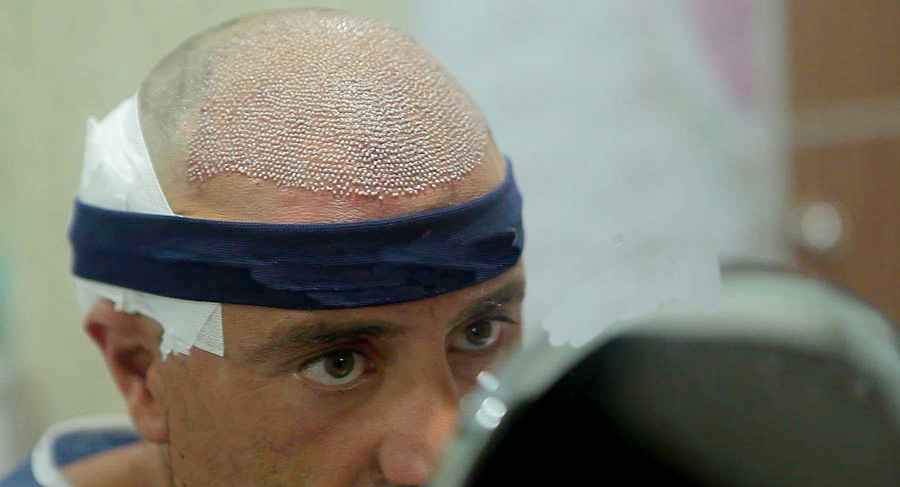
Once you’ve undergone a Fue hair transplant procedure, it’s essential to understand the recovery and aftercare process to ensure successful results. The recovery period plays a crucial role in determining the success of your hair transplant. Following proper aftercare instructions will help you heal faster and minimize the risk of complications. Here, we will discuss the key aspects of recovery and aftercare following Fue hair transplant surgery.
1. Immediate Post-Operative Care: After the Fue hair transplant procedure, your scalp will be sensitive and delicate. It’s important to avoid touching or rubbing the newly transplanted area to prevent any damage. Your surgeon may provide you with a surgical cap to protect the grafts and minimize the risk of infections. It is recommended to keep the cap on for the first few days following the surgery.
2. Managing Discomfort: It is normal to experience some discomfort, such as swelling, tenderness, and mild pain, in the initial days after the Fue hair transplant. Your surgeon may prescribe pain medications or advise over-the-counter pain relievers to ease any discomfort. Applying cold packs to the treated areas can also help reduce swelling and soothe the scalp.
3. Follow Aftercare Instructions: To promote healing and ensure optimal results, it is crucial to follow the aftercare instructions provided by your surgeon. These instructions may include guidelines on how to clean the transplanted area, when to resume normal activities such as washing and styling your hair, and what products to use or avoid during the recovery period. Adhering to these instructions will minimize the chances of complications and help achieve the desired outcome.
Common Questions And Misconceptions About Fue Hair Transplant
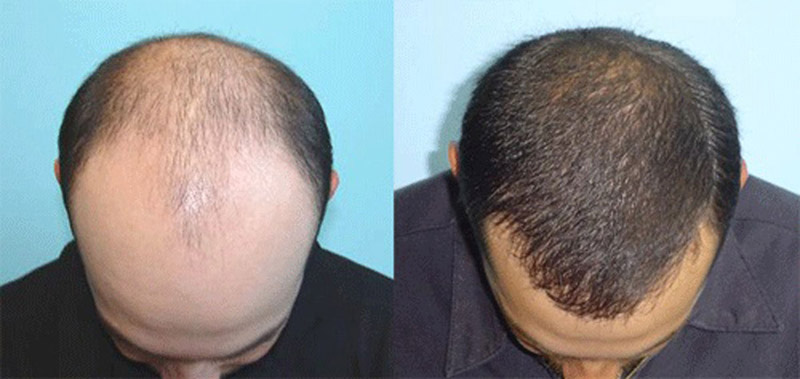
When it comes to hair transplantation procedures, Fue Hair Transplant is gaining popularity among those seeking a solution for hair loss. However, there are still many questions and misconceptions surrounding this procedure. In this blog post, we will address some of the common questions and misconceptions related to Fue Hair Transplant.
1. Is Fue Hair Transplant painful?
One of the most common misconceptions about Fue Hair Transplant is that it is a painful procedure. However, this is not true. Fue Hair Transplant is performed under local anesthesia, which numbs the scalp area. Patients may experience some discomfort during the procedure, but it is generally well-tolerated and not overly painful. Additionally, advances in technology and techniques have made the procedure less invasive, further minimizing any potential pain or discomfort.
2. Will the results of Fue Hair Transplant look natural?
Another misconception is that Fue Hair Transplant results may look unnatural. However, when performed by a skilled and experienced surgeon, the results of Fue Hair Transplant can be incredibly natural-looking. This is because Fue Hair Transplant involves the extraction of individual hair follicles from the donor area and their careful placement in the recipient area. The surgeon’s expertise in designing the hairline and the angle at which the grafts are placed significantly contributes to achieving natural-looking results.
3. Can Fue Hair Transplant be performed on any hair type?
There is a misconception that Fue Hair Transplant can only be performed on certain hair types. However, Fue Hair Transplant can be successfully performed on various hair types, including straight, wavy, and curly hair. The key factor in determining the eligibility for Fue Hair Transplant is the availability of an adequate donor supply. The suitability of the procedure can be assessed during a consultation with a qualified hair transplant specialist.
4. Will Fue Hair Transplant leave visible scars?
One of the common concerns regarding Fue Hair Transplant is whether it will leave visible scars. Unlike older hair transplantation methods, Fue Hair Transplant involves the extraction of individual hair follicles using tiny punches. These punches result in minimal scarring, which is usually not visible to the naked eye. With proper postoperative care, any potential scars can further fade and become virtually undetectable over time.
In conclusion, understanding the common questions and misconceptions surrounding Fue Hair Transplant can help individuals make informed decisions about this procedure. Fue Hair Transplant offers a viable solution for hair loss, with minimal pain, natural-looking results, and suitability for various hair types. Consultation with a reputable hair transplant specialist is recommended to address any specific concerns or questions regarding Fue Hair Transplant.
